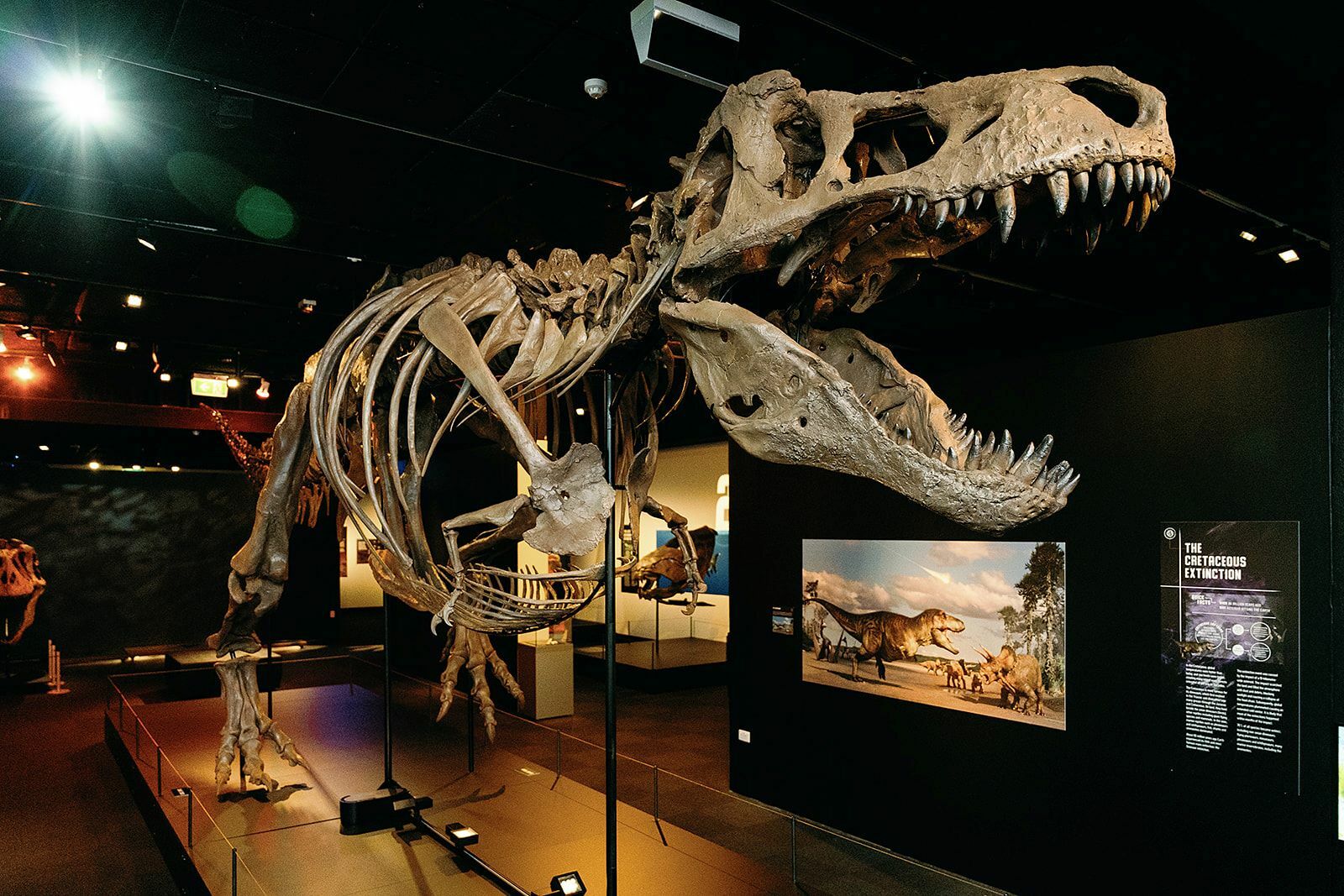Canterbury Museum will open its pop-up Museum at CoCA on Matariki (14 July) with a free temporary exhibition – Six Extinctions, featuring a 13 metre T-rex skeleton – alongside displays of collection highlights and visitor favourites.

The Museum is leasing the CoCA Centre of Contemporary Art Toi Moroki building at 66 Gloucester Street while its Rolleston Avenue buildings are closed for redevelopment over the next 5 years.
The pop-up Museum, Canterbury Museum at CoCA, will be housed on the first floor. CoCA will continue to operate from the building using the Ō Papa ground floor gallery behind the Lux Espresso cafe.
The Museum will use the northern gallery of the first floor for an ongoing display of collection highlights and visitor favourites from the permanent galleries in the recently closed Museum building.
Acting Director Sarah Murray says it’s been challenging to distil the essence of the Canterbury Museum experience into around 80 objects displayed in a much smaller space than the Rolleston Avenue whare taonga (house of treasures).
“We’ve chosen for display taonga which represent the breadth and depth of the collection ranging from a group taxidermied animals through to historic objects from the Antarctic, Mountfort and Early Settlers galleries. We’ll have beautiful taonga Māori and Pasifika for visitors to see alongside the return of two firm visitor favourites, the horse from The Christchurch Street and Ivan Mauger’s gold bike.
“We’re also looking forward to Six Extinctions, our new temporary exhibition which will be on display in the southern gallery until 3 December,” Ms Murray says.
Six Extinctions, produced by Gondwana Studios, premiered last year at the South Australia Museum in Adelaide. Visitors to the exhibition will travel back 485 million years to a time when complex life lived only in the sea and the first plants appeared on land.
They will come face to face with some of the top predators of each geological period including Dunkleosteus, a giant armoured fish that terrorised the seas, Inostrancevia, a tiger-sized sabre-toothed beast, Postosuchus, a giant carnivorous reptile and a life-sized cast of the largest Tyrannosaurus rex ever discovered.
From there they will explore the five mass extinction events in the Earth’s history, and the sixth and current extinction crisis – climate change – which is the first caused by a single species, humans.
Although not all previous mass extinctions are fully understood the exhibition looks at the available evidence, shows how climate has changed in the past and the effect it had on life. It also explains what caused the extinctions, what became extinct and how these events shaped the world as we know it.


